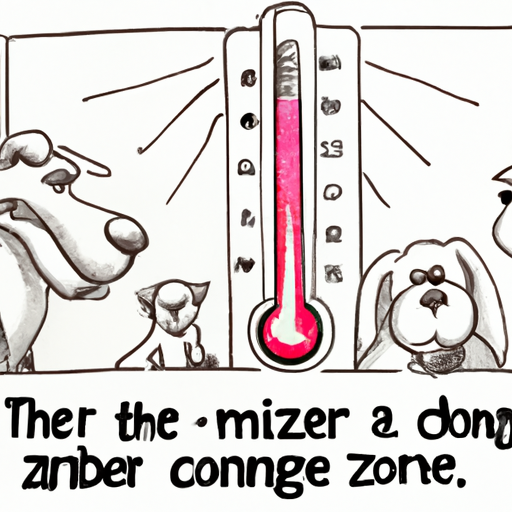As a caregiver, you are no stranger to the responsibilities that come with looking after a pet. Dogs, much like humans, are susceptible to extreme weather conditions. Understanding the temperatures that are unsafe for dogs is paramount in ensuring their well-being.
Heat and Dogs: A Dangerous Combination
When the thermometer shoots up, your furry friend’s safety could be at risk. Dogs don’t sweat like humans. Their primary means of cooling down is through panting. However, this isn’t always efficient, especially in high humidity or extreme heat.
Dogs can suffer from heatstroke, a condition that could be fatal if not treated promptly. Signs of heatstroke include:
- Excessive panting and drooling
- Reddened gums
- Uncoordinated movement or collapse
- Vomiting or diarrhea
- Loss of consciousness in severe cases
Although there’s no set temperature that is considered unsafe for all dogs, temperatures above 80°F (27°C) could potentially pose risks, especially for brachycephalic breeds like Bulldogs or Pugs, elderly dogs, or those with health issues.
Cold and Dogs: Is There a Limit?
Just as heat can be dangerous, so too can cold temperatures for your dog. Dogs can develop hypothermia and frostbite, just like humans.
Signs of hypothermia include:
- Shivering
- Lethargy
- Muscle stiffness
- Low heart and breathing rates
- Fixed and dilated pupils
Generally, temperatures below 45°F (7°C) can start to become uncomfortable for some dogs, and temperatures below 32°F (0°C) can potentially cause hypothermia or frostbite, particularly if your dog is wet or in the cold for a long period.
Breed-Specific Weather Sensitivity
It’s important to note that not all dogs are created equal when it comes to weather tolerance. Some breeds handle cold better than others, and some are more prone to overheating.
| Breed | Tolerance |
|---|---|
| Huskies | High cold tolerance |
| Chihuahuas | Low cold tolerance |
| Bulldogs | Low heat tolerance |
| Greyhounds | Low cold tolerance |
Protecting Your Pet from Extreme Temperatures
- Provide adequate shelter: Ensure your dog has a warm, dry place to sleep away from drafts in cold weather, and a cool, shaded place in hot weather.
- Hydrate: Always provide fresh, clean water. Dogs can dehydrate quickly in hot weather.
- Avoid peak sun hours: Walk your dog in the early morning or late evening when the sun isn’t as strong.
- Use a dog coat: For breeds with short fur or low cold tolerance, use a dog coat when temperatures drop.
FAQ
Q: What temperature is too hot for dogs?
A: Above 80°F (27°C) could be dangerous for some dogs, especially brachycephalic breeds, elderly dogs, or dogs with health issues.
Q: What temperature is too cold for dogs?
A: Temperatures below 45°F (7°C) can start to become uncomfortable for some dogs, and below 32°F (0°C) can potentially cause hypothermia or frostbite.
Q: How can I protect my dog from extreme temperatures?
A: Provide adequate shelter, always offer fresh water, avoid walking your dog during peak sun hours, and consider dog coats for cold-sensitive breeds.
Remember, as a caregiver, your pet’s well-being depends on your vigilance and ability to recognize signs of discomfort or distress. With careful attention to weather conditions, you can ensure your dog stays safe and comfortable, no matter the temperature.



